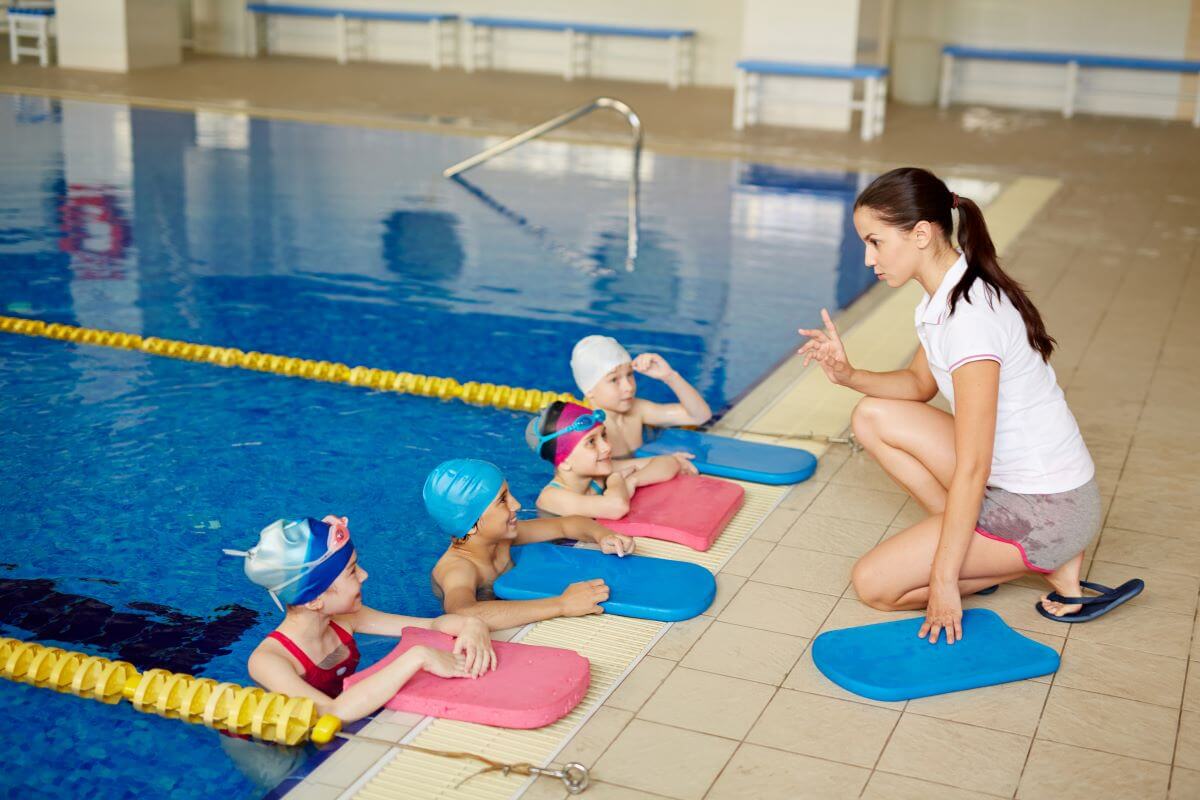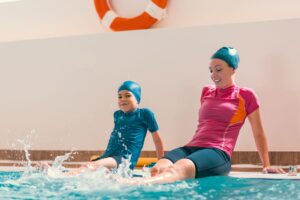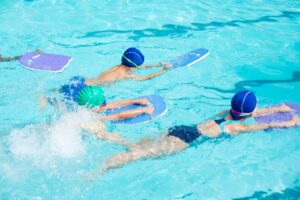
When it’s time for your little one to hop in the pool for swim lessons, you want them to get the most out of their experience. Lessons taught in your home pool can help with this. A familiar environment helps children build the confidence they need to succeed. Here’s a step-by-step guide to help your children get the most out of their swimming lessons!
1. Arrive in Advance
The expression “the early bird gets the worm” is all too true when it comes to swimming lessons. Having some time to relax before a lesson starts is great  for both you and your child. For at-home lessons, your child should be ready five minutes before it starts. When learning at a facility, plan to arrive 15 minutes before your lesson.
for both you and your child. For at-home lessons, your child should be ready five minutes before it starts. When learning at a facility, plan to arrive 15 minutes before your lesson.
Being on time for swimming lessons is beneficial to both students and instructors. It shows students are enthusiastic about lessons and gives kids enough time to learn the required material. Children need time to process what’s taught and get help in areas that need improvement. By arriving on time to lessons or even a little bit early, there is time to learn new things and understand current material.
2. Ensure Comfortable Pool Temperature
Warm water is better than swimming in the cold. After all, how can kids focus on learning if they are shivering? The recommended temperature for pools  is no higher than 88℉ (31℃) and no lower than 84℉ (28℃).
is no higher than 88℉ (31℃) and no lower than 84℉ (28℃).
Ensuring your pool is at the right temperature is an essential part of successful swimming lessons. If a pool is too hot, it can cause dizziness and fainting. This is due to a quick drop in blood pressure. Coldwater can cause increased heart rate and blood pressure which is why athletes swimming in open water competitions are required to wear wetsuits. In the case of children’s swimming lessons, it’s recommended water is closer to the warmer end of the mentioned range. This will keep everyone comfortable and happy during lessons!
3. Minimize Distractions
Private at-home swimming lessons are free of distractions that come with learning in a group at a facility. However, it’s recommended that friends or siblings not participating in lessons play out of sight during lesson time. Such distractions can take away from the learning experience.
To give your child swimming lessons that work well, consistency and patience are key. In other words, maintain a schedule for swimming lessons that allows them to be spaced out evenly. This means having lessons on the same days of the week with the same amount of time between each one, establishing a routine. It may take some time for your child to get used to the water and to get to know their instructor. Monitoring the lesson from afar gives you peace of mind, but does not take away from the instructor’s teaching either.
4. Foster Focus
Watching their child learn warms a parent’s heart and this happens quicker with private lessons! While Instructors are excited to showcase their teaching and progress made with your child, watching from a distance are best for the learning process. Each child needs to pay attention to the instructor and the two need to build rapport to succeed!
Staying focused on lessons allows children to thrive the most. Knowing how to swim properly helps them stay safe in the water. During private lessons, your child and their instructor will develop a friendship as student and teacher. By stepping back, it allows the instructor to assert their authority. This helps your child listen to them during lesson time. More listening means more learning!
5. Encouragement Post-Lessons
When the lesson is over, give your child a pat on the back for a job well done. This encourages the child to build confidence and see the positives of swimming lessons. At-home lessons are an opportunity to find skills that need improvement.
Positive reinforcement encourages your little one to continue to love swim lessons. Knowing that you are proud of their accomplishments, children will want to keep working on their skills. Linking rewards to good behaviour helps show your child that listening is a good thing to do. Doing well in lessons is an example of this and simply letting your child know when they have done good swimming becomes something to look forward to. It also encourages kids to work on skills that need a little more practice!
6. Practice, Practice, Practice
Lessons are key to helping children learn to swim. The best way to remember their newfound skills is to practice. Not sure where to start? Your AquaMobile instructors will be glad to give parents suggestions about skills their children can work on!
What other way is there to get better at something than practicing? Lessons act as an introduction to different swimming skills. Outside of lessons is when they can be put into action. Whether swimming at home or on the beach, swimming can be practiced. By taking constructive feedback from their instructor, children can improve between lessons. Parents can make practicing skills fun by incorporating them into a variety of games!





